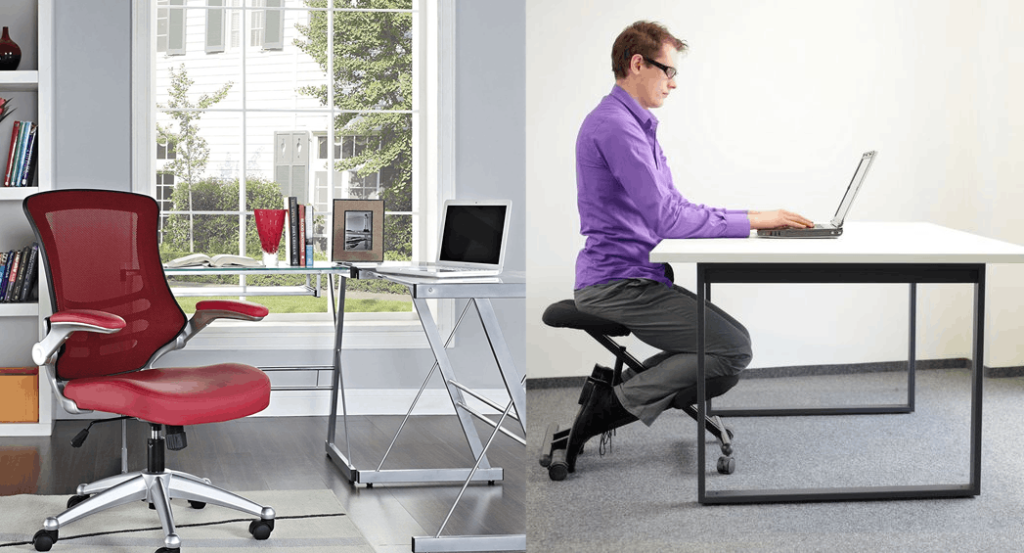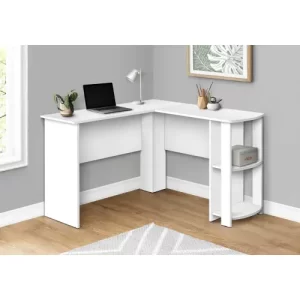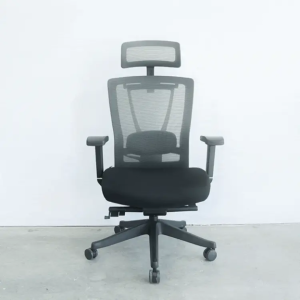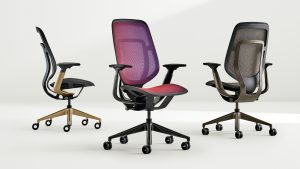
In the contemporary workplace, where hours spent at a desk have become a significant part of our daily routine, the impact of ergonomic office furniture on our well-being and productivity cannot be overstated. Ergonomics, the science of designing products and environments to suit the human body’s natural movements, plays a crucial role in creating a workspace that promotes comfort, health, and efficiency. In this comprehensive guide, we will explore the vital role of ergonomic office furniture and offer practical tips on selecting the right chairs, desks, and accessories to transform your workspace into a haven of well-being and productivity.
Understanding the Importance of Ergonomics
Ergonomic office furniture represents a shift from the traditional one-size-fits-all approach to a more personalized and health-conscious mindset. By integrating adjustable features such as seat height, armrests, and lumbar support, it allows individuals to tailor their workspace according to their unique body proportions and comfort preferences. This individualized approach not only promotes physical well-being but also fosters a sense of empowerment and ownership over one’s work environment.
Ergonomic design extends beyond mere functionality by incorporating aesthetics that contribute to a visually pleasing and inspiring workspace. The fusion of form and function in ergonomic office furniture can elevate the overall mood and productivity of the user, creating a harmonious balance between work and well-being. This emphasis on holistic wellness underscores the importance of considering not only the immediate comfort of employees but also their long-term health outcomes within the context of the modern office environment.
The Benefits of Ergonomic Office Furniture
1. Healthier Posture
Imagine a chair that not only cradles your body, but also actively supports the natural curvature of your spine. Ergonomic chairs are designed to do just that, revolutionizing the way we think about sitting. By providing proper lumbar support, these chairs alleviate the pressure on your lower back and promote healthy posture, ultimately reducing the risk of developing chronic back pain or postural issues. Instead of contorting our bodies to fit standard office chairs, ergonomic designs adapt to us, offering personalized comfort and support.
Ergonomic chairs go beyond mere functionality; they prioritize our physical well-being in today’s sedentary work environments. With an emphasis on user-centered design, these chairs encourage movement and dynamic sitting by allowing for adjustments and flexibility. This not only enhances comfort but also promotes blood circulation and reduces muscle fatigue during long periods of sitting. As a result, ergonomic chairs empower individuals to maintain their productivity while prioritizing their health—a true game-changer in the world of modern workplace furniture.
2. Enhanced Comfort
The demand for ergonomic furniture has never been higher, and for good reason. With the increasing prevalence of desk jobs and sedentary lifestyles, it’s crucial to prioritize comfort and well-being in the workplace. Ergonomic chairs provide a game-changing solution by offering adjustable features such as height, armrests, and tilt angles. This adaptability allows users to personalize their seating experience to suit their unique body shapes and preferences, ultimately promoting better posture, reducing strain, and preventing discomfort throughout the workday.
In addition to enhancing physical comfort, ergonomic furniture also plays a significant role in boosting productivity and concentration. When individuals have the ability to tailor their seating arrangements to their liking, they are more likely to maintain focus on tasks at hand without being distracted by discomfort or pain. Furthermore, empowering employees with customizable ergonomic options can lead to improved overall job satisfaction and morale—a win-win outcome for both employers seeking greater productivity and employees aiming for optimal well-being during working hours.
3. Improved Productivity
Creating a comfortable and healthy work environment is not just a luxury, but an essential investment in maximizing productivity. Ergonomic furniture plays a pivotal role in this equation as it can significantly reduce discomfort and fatigue among employees. By providing chairs with proper lumbar support, adjustable desks, and ergonomic accessories, employers can empower their workforce to maintain focus and productivity throughout the workday.
The impact of ergonomic furniture extends beyond physical well-being; it also influences mental sharpness and emotional engagement. When employees are free from distracting discomfort or pain, they are better equipped to channel their energy into their tasks. This fosters a positive mindset that directly translates into improved performance and efficiency. Therefore, by prioritizing ergonomic design in the workplace, organizations demonstrate a commitment to both employee well-being and enhanced productivity.
4. Prevention of Musculoskeletal Issues:
Prolonged use of non-ergonomic furniture can wreak havoc on the body, leading to a host of musculoskeletal problems. The lack of proper support and alignment places undue strain on the body, resulting in conditions such as carpal tunnel syndrome, neck pain, and other repetitive strain injuries. This can have a profound impact on productivity and quality of life, as individuals struggle with chronic discomfort and reduced mobility.
The importance of ergonomic chairs and desks cannot be overstated in preventing these issues. By providing proper lumbar support, adjustable heights, and armrests, ergonomic furniture minimizes the risk of developing musculoskeletal problems associated with prolonged sitting. It’s not just about comfort; it’s about preserving long-term physical health and well-being. Investing in ergonomic furniture is an investment in the health and vitality of both employees and individuals working from home.
Common Pieces of Ergonomic Office Furniture
1. Ergonomic Chairs
Ergonomic chairs have become a staple in modern workplaces, as more and more people realize the importance of maintaining good posture and reducing the risk of musculoskeletal disorders. These chairs are designed to provide support and comfort for long hours of sitting, aiming to alleviate strain on the body typically caused by traditional office chairs. However, it’s important to note that not all ergonomic chairs are created equal. With the growing demand for these specialized seats, it’s essential for consumers to do their research and invest in high-quality options that truly cater to their individual needs.
One key feature that sets ergonomic chairs apart is their adjustability. From seat height and depth to lumbar support and armrests, these chairs offer customizable settings to accommodate various body types and preferences. Moreover, ergonomic chair designs continue to evolve, incorporating innovative materials and technologies such as breathable mesh upholstery or dynamic lumbar support systems. By adapting to the user’s movements and providing ample ventilation, these advancements aim to enhance overall comfort while promoting healthier sitting habits.
As our understanding of ergonomics continues to advance, so too will the evolution of ergonomic chair design. From incorporating smart technology for personalized adjustments to exploring sustainable materials for environmentally-conscious consumers — the future of ergonomic seating holds promising developments for both workplace efficiency and employee well-being. As businesses prioritize creating comfortable work environments that foster productivity and health, investing in quality ergonomic chairs remains a crucial step towards achieving this goal.
2. Ergonomic Desks
Ergonomic desks have become increasingly prevalent in the modern workspace, with a growing understanding of the detrimental effects of prolonged sitting. While standing desks have gained traction, adjustable ergonomic desks offer a dynamic solution that accommodates both sitting and standing positions. This adaptability allows for greater freedom of movement and can alleviate the physical strain caused by stationary desk work.
Customizable ergonomic desks are designed to address individual needs, catering to different heights and body types. By incorporating features like adjustable height settings and tilting surfaces, these desks promote proper posture and reduce the risk of musculoskeletal disorders. The integration of technology into ergonomic desk designs has also led to innovative solutions such as built-in cable management systems and power outlets, enhancing functionality while maintaining a clean aesthetic.
When considering the impact of sedentary behaviors on health, it is evident that investing in an ergonomic desk is not only practical but also essential for promoting overall well-being in today’s workplace environment. As more individuals recognize the importance of prioritizing their physical health during long hours at their desks, ergonomic solutions continue to evolve to meet these changing needs.
3. Sit and Stand Desk
Sit and stand desks have revolutionized the modern workplace, offering a dynamic solution to the sedentary lifestyle often associated with office work. By allowing users to easily switch between sitting and standing positions, these desks promote better posture, increased energy levels, and improved concentration. However, it’s important to recognize that simply having a sit-stand desk is not enough; regular changes in position are essential for reaping its full benefits. Incorporating short walks or stretches into the routine can further enhance the ergonomic advantages of using a sit-stand desk.
Research has shown that alternating between sitting and standing throughout the day can reduce the risk of health issues such as obesity, cardiovascular disease, and musculoskeletal disorders. This highlights the importance of investing in quality sit-stand desks that are adjustable to each individual’s needs. In essence, understanding how to utilize these ergonomic pieces of furniture effectively is crucial for maximizing their positive impact on overall well-being in both professional and personal settings.
4. Laptop Stands
The laptop stand is often an overlooked but crucial item for maintaining a healthy and productive work environment. With more and more people working on laptops for extended periods, proper ergonomics becomes essential to prevent strain and discomfort. A well-designed laptop stand can elevate the screen to eye level, reducing neck and shoulder strain caused by hunching over the computer. This simple adjustment promotes better posture and can significantly decrease the risk of musculoskeletal issues in the long term.
Investing in a quality laptop stand not only benefits physical health but also boosts productivity. By creating a more comfortable and ergonomic workspace, employees are able to focus better on their tasks without being distracted by discomfort or pain. Studies have shown that improving ergonomics in the office leads to increased efficiency and reduced absenteeism due to work-related injuries. Ultimately, promoting the use of laptop stands demonstrates a commitment to employee well-being and can contribute to a positive office culture focused on both health and performance.
5. Monitor Arm Mount
The monitor arm mount impact cannot be overstated. In today’s digital age, we spend a significant portion of our day staring at screens, leading to neck strain and eye fatigue. However, with a monitor arm mount, we can easily adjust the height and angle of our screens to ensure proper alignment with our eyes, reducing strain and discomfort.
Using a monitor arm mount allows for better utilization of desk space. With the ability to lift the monitor off the desk surface and free up valuable real estate, employees can create a more organized and efficient workspace. This not only enhances productivity but also contributes to an aesthetically pleasing environment that fosters concentration and creativity.
In addition to improving posture and minimizing clutter, utilizing monitor arm mounts can also signal an employer’s commitment to employee health and well-being. By investing in ergonomic solutions like these mounts, companies demonstrate their dedication to creating a comfortable work environment that prioritizes the physical health of their staff members.
Conclusion
Incorporating ergonomic office furniture into your workspace is not just a luxury but a necessity for fostering a healthier and more productive work environment. By prioritizing comfort, health, and efficiency, businesses can empower their employees to perform at their best. From adjustable chairs to desks that cater to various working styles, each piece of ergonomic office furniture contributes to a workspace that supports the well-being and success of its occupants. Embrace the principles of ergonomics, make informed choices, and transform your office into a haven where comfort and productivity seamlessly coexist.





